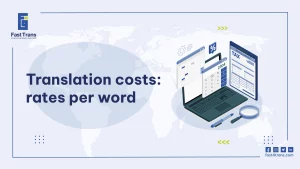Arabic website localization testing ensures your site feels native to Arabic-speaking users by fine-tuning elements like right-to-left text, regional formats, and culturally relevant content. It’s not just about translating words but optimizing layout, SEO, and functionality for a seamless experience. With thorough testing, businesses can enhance user engagement, expand their reach, and stand out globally by offering a culturally tailored and error-free product.
What is Arabic website localization testing?
Arabic website localization testing is a process used to ensure that websites are adapted for a specific locale or market. This includes checking things such as translation accuracy, cultural relevancy, and feature functionality.
It involves tweaking and fine-tuning websites so they’re not just translated, but feel native to the local audience.
Think of it as giving your website a local makeover. It’s not just about words – it’s about making sure dates, currencies, and even colors make sense to someone in Tokyo as much as someone in New York.
It’s all about creating a seamless, enjoyable experience for everyone, everywhere.
Understanding Arabic website localization testing Related Terms
Arabic website localization testing involves adapting content for Arabic-speaking audiences, focusing on translating and culturally adjusting text and visuals. Internationalization (i18n) prepares a site for easy localization, while globalization ensures broad, culturally relevant accessibility.
1. Internationalization
Also abbreviated as (i18n). You can think of it as prepping your website to be world-ready, like making sure its infrastructure is flexible for all kinds of localization, so it can easily switch languages and formats without a hitch.
Internationalization (i18n) involves separating the source code from textual content so it can be localized to any language without the need to change the source code every time.
2. Arabic Localization
Abbreviated as (L10n). It’s obviously the actual adaptation process – translating text, tweaking images, and making sure everything fits the local culture.
It’s the linguistic process of translating and adapting textual and non-textual content to match a specific local audience.
3. Globalization
Globalization ties it all together, ensuring your website is universally accessible and culturally relevant. It’s a step beyond internationalization.
When’s the right time for Arabic website localization testing?
Arabic website localization testing should start during development to address issues early, continue through pre-release to ensure quality, and remain ongoing after launch for updates and feedback. This process ensures a smooth experience for users across regions.
1. During Product Development
The best time to kick off Arabic website localization testing is right from the development stage. Integrate it into your agile development cycles to ensure that localization issues are identified and addressed promptly.
2. Pre-Release Testing Stage
Before the big launch, you need to engage in thorough pre-release Arabic website localization testing to ensure everything works perfectly across all target locales. After all, no one wants to risk the launching of a halfway-tested product.
3. Post-Release Updates
Post-launch, users will indeed have some feedback on your product. Therefore, it’s necessary to maintain a routine of ongoing localization testing to adapt to any changes or updates. This proactive approach helps catch issues early on.
Arabic website localization testing Tips to Know Before Publishing
Before publishing an Arabic website, focus on ensuring RTL layout, font compatibility, accurate translation, and cultural sensitivity. Also, optimize for SEO, test functionalities, and comply with local regulations to provide a seamless, culturally relevant experience for Arabic-speaking users.
1. Check Right-to-Left (RTL) Layout
Arabic is written and read from right to left, unlike most Western languages. Ensure that your website’s layout and design are adapted for RTL reading. This includes the correct alignment of text, images, and navigation menus. Test all pages to confirm that elements like buttons, menus, and forms are visually and functionally correct in the RTL format.
2. Font Compatibility
Arabic text requires specific fonts that support the script and ensure readability. Not all fonts are designed to handle Arabic characters properly. Make sure that the font you use is legible, clear, and widely supported. Also, ensure that it renders correctly on different devices and browsers.
3. Ensure Accurate Translation
Accurate translation is vital in website localization. Machine translation may miss cultural nuances or produce awkward sentences. Always use professional translators who understand the language, culture, and context of the content. Verify that the translations make sense in Arabic and are culturally appropriate for your target audience.
4. Cultural Sensitivity
Arabic-speaking countries have diverse cultures, traditions, and values. Review your content to ensure that it’s culturally appropriate. Be mindful of images, colors, and phrases that may have different meanings or connotations in the Arab world. For example, certain colors or symbols may be seen as offensive or inappropriate in some cultures.
5. SEO Considerations
Localization isn’t just about translating content. Make sure to adapt your SEO strategy for Arabic speakers. This includes optimizing keywords, meta descriptions, and headings in Arabic. Conduct keyword research specific to Arabic-speaking audiences and ensure that the site structure supports Arabic search terms effectively.
6. Test Date, Time, and Currency Formats
Arabic-speaking countries use different formats for dates, times, and currency. Make sure that the date format aligns with regional preferences (e.g., DD/MM/YYYY), and that the time zone is correct. Currency symbols should also match the country’s standards (e.g., AED for the UAE, SAR for Saudi Arabia).
7. Mobile Responsiveness
A significant number of users in Arabic-speaking countries access websites via mobile devices. Ensure that your website is mobile-friendly and that all elements display correctly on smaller screens. Test for touch functionality, mobile-specific navigation, and responsive design elements.
8. Test Functionalities and Links
Make sure all features, such as forms, buttons, and interactive elements, work as expected in Arabic. Test for broken links, improper redirects, and any functionality that could be impacted by the right-to-left layout. Also, check if any text is cut off or misaligned due to the length of Arabic words.
9. Content Relevance and Context
Ensure that the content resonates with the Arabic-speaking audience. This may include offering region-specific products, services, or information. Consider translating region-specific slang or dialects that might appeal to different Arabic-speaking communities (e.g., Modern Standard Arabic vs. regional dialects).
10. Legal and Regulatory Compliance
Arabic-speaking countries have different regulations regarding online content, including privacy laws, advertising rules, and content restrictions. Before publishing your website, check that your content complies with local laws and regulations to avoid any legal issues.
11. User Testing with Native Speakers
After localizing your website, it’s essential to conduct user testing with native Arabic speakers to ensure that the content, design, and functionality align with their expectations. This real-world feedback is invaluable for refining your website and identifying issues that might have been overlooked during testing.
By following these tips, you can ensure that your Arabic website is fully optimized for its target audience, providing a positive, engaging, and culturally respectful experience for Arabic-speaking users.
Arabic website localization testing best practices: an essential checklist
For effective Arabic website localization, start testing early, involve native speakers, and ensure real environment testing. Validate key functionalities and maintain consistent terminology to enhance SEO and user experience.
1. Start Early
Kick things off during the development phase. The sooner you start testing, the easier it is to catch issues.
2. Use Native Arabic Speakers
Involve native speakers in your testing process. They bring invaluable cultural insights because they already speak the local of your target audience.
3. Test in Real Environments
Always test in settings that reflect actual user conditions. Think of different devices, operating systems, and browsers.
4. Check Functional Elements
Validate key functionalities, such as date formats and currency conversions. It’s all about making sure everything works smoothly.
5. Maintain Consistent Terminology
Develop a glossary of key terms to keep your messaging clear and consistent across all languages.
Benefits of Arabic website localization testing
Arabic website localization testing boosts your reach to diverse markets, increases user satisfaction, and reduces errors. It also gives you a competitive edge by making your product stand out in the global marketplace.
1. Expanded Market Reach
Arabic Localization opens doors to various demographics, helping you grow your customer base, the more customers you are able to address, properly, the more international markets will welcome you.
2. Increased User Engagement
When users feel that a product speaks to them, expect their satisfaction and loyalty to increase. It’s not every day that users engage with apps or websites that care about their experience.
3. Error Reduction
Thorough Arabic website localization testing allows you to identify and fix bugs early on, enhancing reliability, so that when your product is finally live, you won’t risk negative feedback that’s so hard to turn around.
4. Competitive Edge
By offering a well-localized product, you differentiate yourself in a crowded marketplace. It can get quite lonely at the top because not all competitors are focused on going globally.
How Fast Trans can help with localization testing?
Localization Testing should be a simple and smooth process that unlocks the potential of your application, website, or software and not a bumpy or confusing process.
Therefore, at Fast Trans, we provide localization testing services with top-tier quality that can let you confidently launch the product to the world without an inch of doubt.
Get in touch with us to know all the details regarding localization Testing, and feel free to have a look at our comprehensive Localization Services here.
Conclusion
Arabic website localization testing ensures websites are appropriately adapted for Arabic-speaking audiences, focusing on language accuracy, cultural relevance, and functionality. This process involves customizing elements such as text, images, and layout to make the site feel native to the target market. It is essential to adjust for factors like right-to-left text alignment, regional date formats, and currency symbols to ensure a seamless and user-friendly experience.
Effective localization testing goes beyond translation by considering cultural nuances and optimizing SEO for Arabic-speaking users. Key aspects include testing mobile responsiveness, ensuring font compatibility, and adapting legal content to meet local regulations. By conducting thorough testing, businesses can expand their reach, improve user engagement, and reduce errors, providing a competitive edge in the global marketplace.











